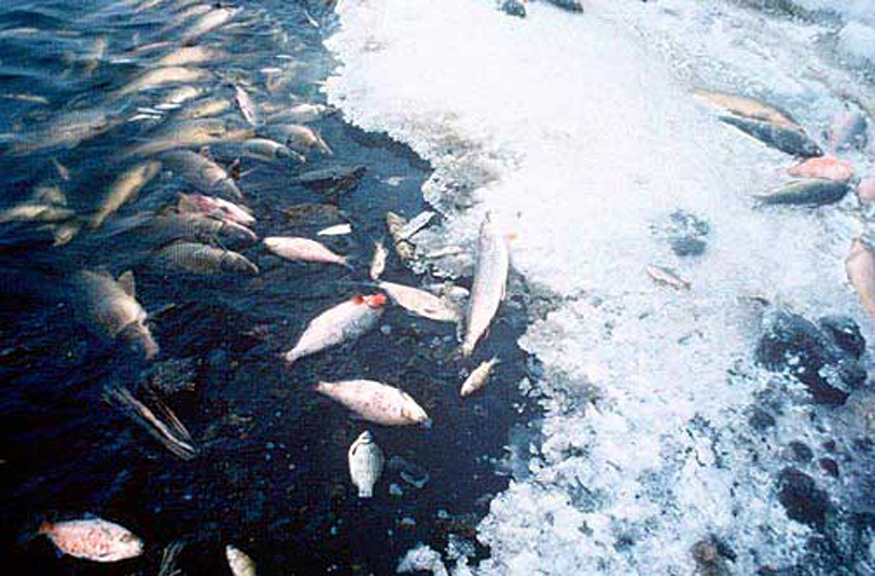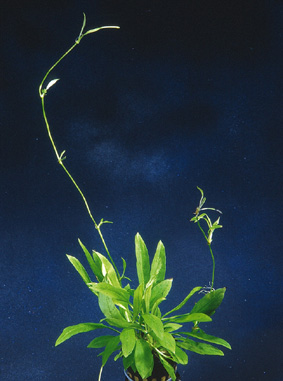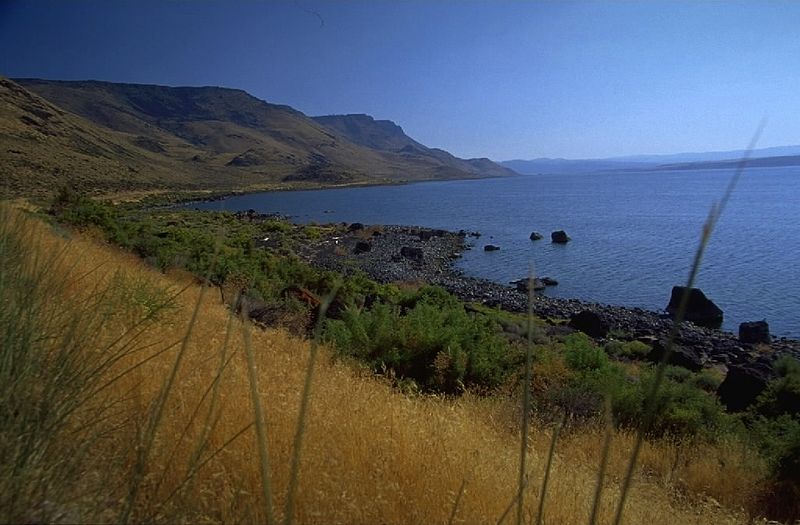Total Pageviews
Monday, January 10, 2011
An Interesting Characteristic
Lakes and reservoirs make up the huge majority of the .007% of freshwater available for human use. With the pollution, abuse and destruction of these ecosystems, our main way of collecting fresh water is in danger. Without access to clean water civilization cannot progress and eventual mass extinction is possible.
Eco-Tourism in the Lake Biome
Eco-tourism is the tourism to exotic or threatened ecosystems to observe wildlife or to help preserve nature. If one were to eco-tour a lake biome, there are several important things to remember.
1. What takes days to ruin can take centuries to fix.
Several articles have been released showing how wide reaching the effects are of dumping contaminants into lakes. Along with all the immediate death and destruction, it can take hundreds of years for the lake to repair its natural balance. That is, if it can even be repaired at all. So remember, every little bit of waste disrupts the ecosystem. Always responsibly dispose of all waste.
2. Lake biodiversity is in danger.
Through the introduction of non-native species, global warming, pollution and other human activities, lake biodiversity is severely threatened. It is estimated that only 10% of all animal species are known to scientists. With every lake species killed off, a medicine to combat a disease may not come to light. No new insight on the earth's history is gained. An ecosystem may be destroyed. Biodiversity is not only important to natural ecosystems, it is also key to the global fishing economy. Protecting biodiversity could reap many rewards, but not protecting it can only hurt us.
3. Freshwater is a valuable resource.
Only 2.5% of the world's water supply is freshwater. Only .007% of the world's freshwater supply is even available directly for human use. With every lake contaminated, that number keeps getting smaller. Water is key to life on Earth. We need to be smart with the little bit we have.
4. Invasive species are rarely helpful.
Besides destroying native species, invasive, introduced species can ruin economies centered around fishing. In this bad economy, no one can afford to lose more jobs.
5. Poor land management has far reaching consequences.
It is important for farmers to responsibly use their fertilizer and not over-farm their land. This can lead to serious runoff into lakes, lowering dissolved oxygen and creating algal blooms which suffocate fish.
1. What takes days to ruin can take centuries to fix.
Several articles have been released showing how wide reaching the effects are of dumping contaminants into lakes. Along with all the immediate death and destruction, it can take hundreds of years for the lake to repair its natural balance. That is, if it can even be repaired at all. So remember, every little bit of waste disrupts the ecosystem. Always responsibly dispose of all waste.
2. Lake biodiversity is in danger.
Through the introduction of non-native species, global warming, pollution and other human activities, lake biodiversity is severely threatened. It is estimated that only 10% of all animal species are known to scientists. With every lake species killed off, a medicine to combat a disease may not come to light. No new insight on the earth's history is gained. An ecosystem may be destroyed. Biodiversity is not only important to natural ecosystems, it is also key to the global fishing economy. Protecting biodiversity could reap many rewards, but not protecting it can only hurt us.
3. Freshwater is a valuable resource.
Only 2.5% of the world's water supply is freshwater. Only .007% of the world's freshwater supply is even available directly for human use. With every lake contaminated, that number keeps getting smaller. Water is key to life on Earth. We need to be smart with the little bit we have.
4. Invasive species are rarely helpful.
Besides destroying native species, invasive, introduced species can ruin economies centered around fishing. In this bad economy, no one can afford to lose more jobs.
5. Poor land management has far reaching consequences.
It is important for farmers to responsibly use their fertilizer and not over-farm their land. This can lead to serious runoff into lakes, lowering dissolved oxygen and creating algal blooms which suffocate fish.
Ecological Succession in Lakes
In actuality, a freshwater lake is a step in the hydrosere succession process of open, lifeless water into a woodland. This process takes several hundred to thousands of years. There are several stages to hydrosere (freshwater) succession.
Stage One: Phytoplankton Stage
Floating phytoplankton settle in bare water, and then die and create humus which eventually becomes soil for the use of other species.
Stage Two: Submerged Stage
Other species take root due to useable soil and organic matter quickly builds up in the lake.
Stage Three: Floating Stage
Plants floating on the water block out too much light for submerged species, making it impossible for them to survive.
Stage Four: Reed Swamp Stage
Reed grasses now enter the lake and buildup peat, converting the lake into a saturated marsh.
Stage Five: Sedge-meadow Stage
As the water level decreases more leaf litter accumulates and the water is no longer waterlogged. New secondary species invade and remove any marsh like soil.
Stage Six: Woodland Stage
The soil dries further and shrubs and bushes invade, along with microorganisms.
Stage Seven: Climax Stage
A woodland stage is finally reached, populated by trees and decomposers that quickly remove any rotting vegetation.
*Often times lakes become too deep from constant rainfall or impenetrable basins, which halts the ecological succession process.
Here is an excellent website for reference: http://en.wikipedia.org/wiki/Hydrosere
Stage One: Phytoplankton Stage
Floating phytoplankton settle in bare water, and then die and create humus which eventually becomes soil for the use of other species.
Stage Two: Submerged Stage
Other species take root due to useable soil and organic matter quickly builds up in the lake.
Stage Three: Floating Stage
Plants floating on the water block out too much light for submerged species, making it impossible for them to survive.
Stage Four: Reed Swamp Stage
Reed grasses now enter the lake and buildup peat, converting the lake into a saturated marsh.
Stage Five: Sedge-meadow Stage
As the water level decreases more leaf litter accumulates and the water is no longer waterlogged. New secondary species invade and remove any marsh like soil.
Stage Six: Woodland Stage
The soil dries further and shrubs and bushes invade, along with microorganisms.
Stage Seven: Climax Stage
A woodland stage is finally reached, populated by trees and decomposers that quickly remove any rotting vegetation.
 |
| Ecological succession of a lake/pond as seen in between stages two and three. |
Here is an excellent website for reference: http://en.wikipedia.org/wiki/Hydrosere
Enviornmental Damage and Possible Solution in Lakes
Here are a few interesting articles outlining some of the damage humans have caused to lake biomes, as well as proposing how to repair and re-balance the biomes.
http://www.allbusiness.com/professional-scientific/scientific-research/508960-1.html
http://articles.latimes.com/2001/mar/18/local/me-39199
http://current.com/1158u4c
Basically, the overuse of fertilizers in agricultural practices has led to large amounts of runoff into lakes. This causes toxic algal growth, cutting of oxygen supplies to fish in the lake, sometimes permanently damaging the lake's balance. Here is a direct quote from the "allbusiness.com" article. "It could take a thousand years for lakes to recover from the damage done by humans in only six decades, claims limnologist Stephen R. Carpenter of the University of Wisconsin-Madison. Due to the extensive use of fertilizers, an enormous buildup of phosphorus in soils in lake watersheds is putting the lakes at risk of eutrophication for centuries to come, says Carpenter, an authority on freshwater lakes. Eutrophication stimulates toxic algae growth and chokes off the oxygen supply in the lakes, killing fish. The only way to reverse the damage is to substantially change soil management to reduce soil erosion, says Carpenter, who also recommends developing larger buffers around lakes and streams, restoring wetlands, and improving manure storage and handling processes in order to reduce phosphorus runoff."
Problems with acid rain caused by the burning of fossil fuels are also prevalent in many lake biomes around the world. The acid rain falling in lakes is positively charged and repels similarly charged calcium, which is needed for all living organisms and is critical in the keystone species of many lake environments.
Obviously, humans will have to find new fuel sources and less harmful fertilizer in order to stop damaging lake's ecosystems. However, it will still take several hundred years for some of these lakes to recover, and it will be necessary for humans to safeguard these damaged lakes for many generations to come.
http://www.allbusiness.com/professional-scientific/scientific-research/508960-1.html
http://articles.latimes.com/2001/mar/18/local/me-39199
http://current.com/1158u4c
Basically, the overuse of fertilizers in agricultural practices has led to large amounts of runoff into lakes. This causes toxic algal growth, cutting of oxygen supplies to fish in the lake, sometimes permanently damaging the lake's balance. Here is a direct quote from the "allbusiness.com" article. "It could take a thousand years for lakes to recover from the damage done by humans in only six decades, claims limnologist Stephen R. Carpenter of the University of Wisconsin-Madison. Due to the extensive use of fertilizers, an enormous buildup of phosphorus in soils in lake watersheds is putting the lakes at risk of eutrophication for centuries to come, says Carpenter, an authority on freshwater lakes. Eutrophication stimulates toxic algae growth and chokes off the oxygen supply in the lakes, killing fish. The only way to reverse the damage is to substantially change soil management to reduce soil erosion, says Carpenter, who also recommends developing larger buffers around lakes and streams, restoring wetlands, and improving manure storage and handling processes in order to reduce phosphorus runoff."
Problems with acid rain caused by the burning of fossil fuels are also prevalent in many lake biomes around the world. The acid rain falling in lakes is positively charged and repels similarly charged calcium, which is needed for all living organisms and is critical in the keystone species of many lake environments.
Obviously, humans will have to find new fuel sources and less harmful fertilizer in order to stop damaging lake's ecosystems. However, it will still take several hundred years for some of these lakes to recover, and it will be necessary for humans to safeguard these damaged lakes for many generations to come.
The Carbon Cycle in Lakes
 |
| Add caption |
Introduced Species in Lake Biome
Nile Perch, native to several river basins and lakes in Africa, was imported into Lake Victoria in East Africa in the 1950's in an attempt to boost income for commercial fishing establishments along the lake. Nile Perch caused the extinction or near extinction of several hundred native species, but with increases in commercial fishing of Nile Perch, their population as been lowered and some native species are making a comeback.
 |
| Nile Perch can grow to extreme sizes. |
 |
| An excellent view of Lake Victoria from sub-orbit. |
Density-Dependent Factors of a Lake Biome
Density-dependent factors are the factors in a lake biome that change in regard to the amount of organisms living in the lake, and how dense life in the lake is. These factors include competition for food and shelter, parasites, the spread of diseases and in dissolved oxygen levels.
 |
| The low dissolved oxygen level in this lake suffocated these fish. |
Density-Independent Factors of a Lake Biome
Density-independent factors of a lake biome will include natural disasters, climate, salinity levels, and in some cases dissolved oxygen levels in lakes. These factors are determined naturally with no regard to how dense the life in the lake is.
 |
| Some of these fish have been killed from the hurricane, and some were killed by the low dissolve oxygen levels that occurred as a results of the hurricane. |
Coevolution Mechanisms in Lake Biomes
Camouflage - Lake Trout (Salvelinus namaycush) have a natural camouflage on their bodies that helps them blend in with the soil at the bottom of lakes while searching for prey.
Mimicry - Rhinogobius, a tropical freshwater gobie, has an interesting use for mimicry. Occasionally, male gobies will develop female-like exteriors and mimic female behavior. This is so that these males can get closer to the still unfertilized females without competition from larger males, increasing their chances of fertilizing the eggs.
 |
| The natural camouflage of a Lake Trout. |
 |
| A male Rhinogobius mimicking a female Rhinogobius. |
Predator and Prey
These are three predator-prey relationships well-documents in the lake biomes of North America.
A Northern Pike preying on a Bullfrog.
A Carp preying on Crayfish.
Yellow Perch preying on freshwater snails and worms.
A Northern Pike preying on a Bullfrog.
 |
| The Northern Pike and Bullfrog. |
 |
| Ironically, Crayfish eating a Carp corpse. |
 |
| Yellow Perch searching the ground for worms. |
Endangered Lake Species
The Commanche Springs Pupfish is a species of fish that is only found in the spring-fed lakes around and near Balmorhea, Texas. It's extreme rarity is due to it's extremely small range in the wild. There have also been pollution risks for the Commanche Springs Pupfish due to the dumping of waste in the lakes.
 |
| The Commanche Springs Pupfish. |
Mutualism, Commensalism, Parasitism, and Competitive Relationships in Lakes
Mutualism - In nearly all lakes across the world, algae and fungi work together to form communities called lichens.
Commensalism - Many species of pondweed provide protection and shelter to numerous species of fish.
Parasitism - Icthyophirius multifilis, called "Ich", infects nearly all freshwater fish.
Competitive relationship- Both freshwater snails and Anuran tadpoles feed on periphytic algae.
 |
| A lichen community. |
 |
| A clear example of pondweed. |
 |
| The white dots are encrusted parasites. |
 |
| Anuran tadpoles searching for food. |
A Common Food Chain
This common food chain is well documented in Lake Michigan.
Green Algae - Producer
Mollusk - Primary Consumer
Rainbow Smelt - Secondary Consumer
Lake Trout - Tertiary Consumer
Sea Lamprey - Decomposer
*The Sea Lamprey is an introduced species to Lake Michigan.
Green Algae - Producer
 |
| Green Algae |
 |
| Mollusk |
 |
| Rainbow Smelt |
 |
| Lake Trout |
 |
| Sea Lamprey |
Common Plants in Lakes
Eurasian Watermilfoil - Myriophyllum spicatum
Brazilian Waterweed - Egeria densa
Broad-leaved Dwarf Amazon Sword - Echinodorus quadricostatus
Hydrilla - Hydrilla verticillata
Alligator Weed - Alternanthera philoxeroides
 |
| Eurasian Watermilfoil |
 |
| Brazilian Waterweed |
 |
| Broad-leaved Dwarf Amazon Sword |
 |
| Hydrilla |
 |
| Alligator Weed |
Common Animals in Lakes
Northern Pike - Esox lucius
Yellow Perch - Perca flavescenes
Carp - Cyrpinus carpio
Zooplankton - Daphnia ambigua
Lake Whitefish - Coregonus clupeaformis
 |
| Northern Pike |
 |
| Yellow Perch |
 |
| Carp |
 |
| Daphnia ambigua |
 |
| Lake Whitefish |
Precipitation and Temperature
Seeing as lakes exist all over the world, the average temperature of the lake biome would be from around 32 degrees Farenheit to 102 degrees Farenheit, the temperature range of planets in the "Goldilocks Zone".
In regards to precipitation, the variance in average yearly rainfall ranges from up 460" to nearly 0" of precipitation.
In regards to precipitation, the variance in average yearly rainfall ranges from up 460" to nearly 0" of precipitation.
| A lake in Cherripunji, India. These lakes receive 460" of rainfall a year. |
 |
| Lake Abert, a desert lake with nearly lifeless waters. |
Lake Soil Types
The soil types of lakes vary on where in the world they are located, but the soil types include littoral soil, silty clays, calcareous soil, finely grained silts and clays, and bay mud.
 |
| An example of finely grained silts mixed with large stones. |
 |
| Three individuals enjoying themselves in bay mud. |
| An example of clay soil in a small man made lake. |
Biotic and Abiotic Features of Lakes
Biotic features are features of or relating to the organisms of the lake. They include all the species near and around the lake, though specific examples would depend on where the lake was located around the world.
Abiotic features are any features of a lake that are not related to organisms. They could include the water temperature, the water's turbidity, the soil type of the lake, and the pH levels of the lake.
Abiotic features are any features of a lake that are not related to organisms. They could include the water temperature, the water's turbidity, the soil type of the lake, and the pH levels of the lake.
 |
| An example of extremely turbid water in Lake Balangida. |
 |
| The pH levels of Mono Lake being tested. |
Lakes
Lakes are bodies of relatively still fresh or salt water, located in basins surrounded by land. They are found across the world in mountainous areas, rift zones, areas with ongoing glaciation, endorheic basins, and along the courses of mature rivers.
 |
Subscribe to:
Posts (Atom)



